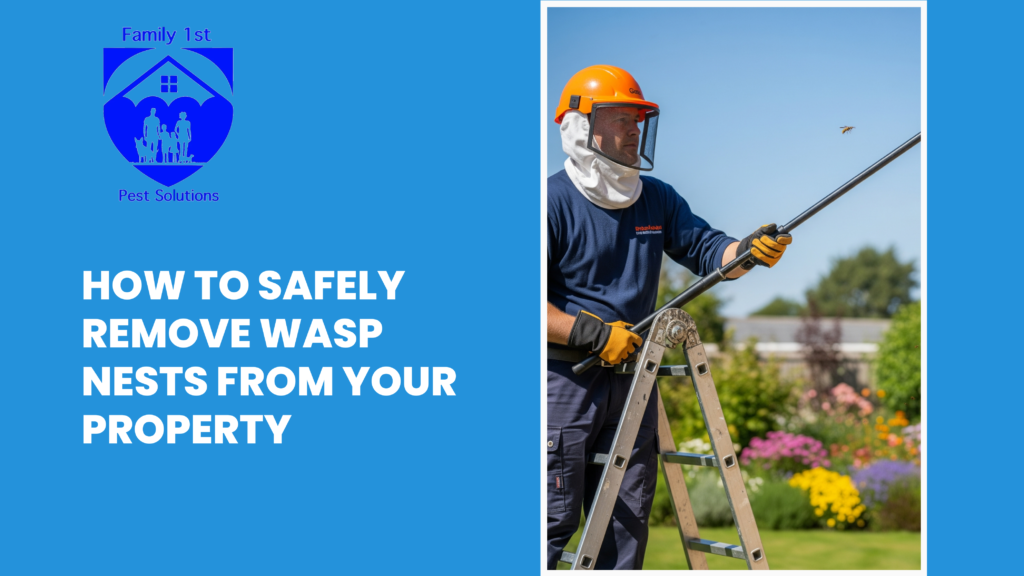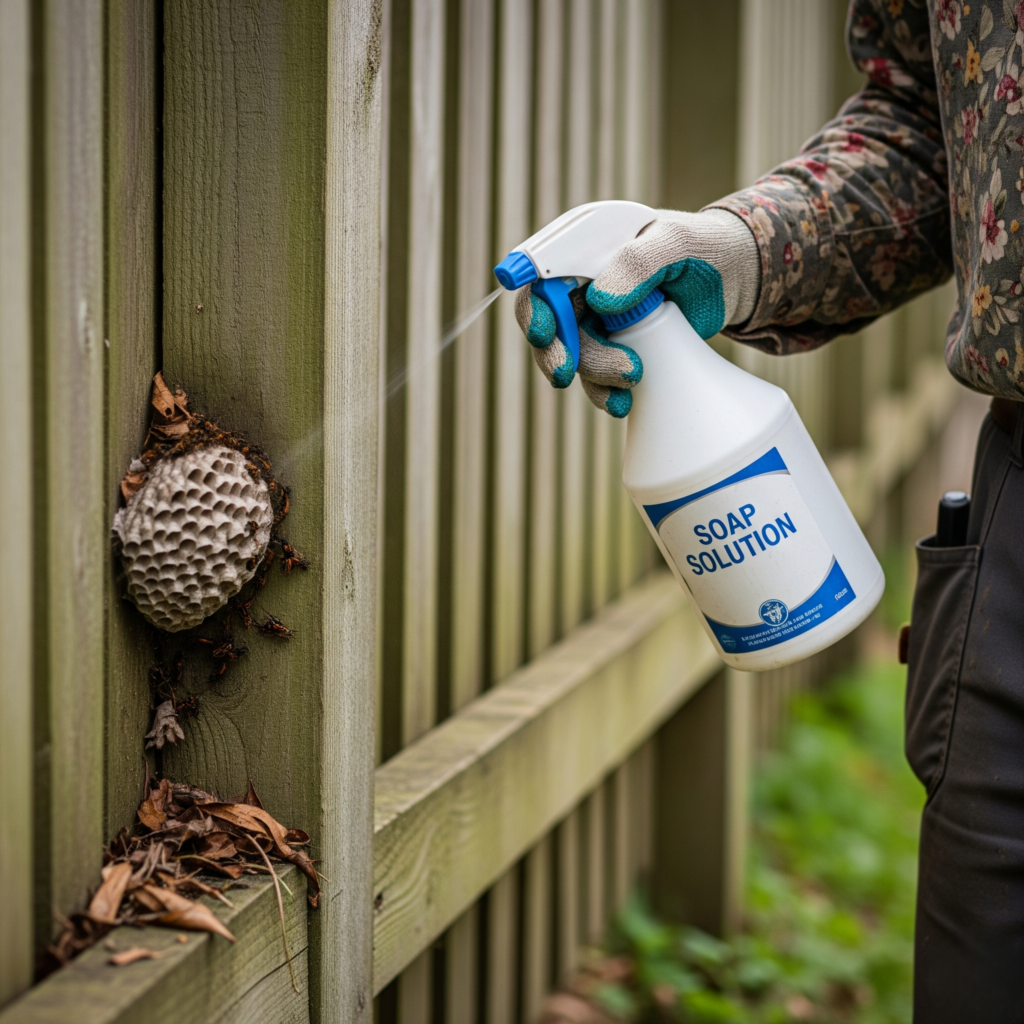Wasps are useful pollinators but can become dangerous when they build nests too close to your home, deck, or garden. Their aggressive nature, especially when threatened, can put your family and pets at risk. Knowing how to remove wasp nests safely, or when to call in the professionals, is essential for maintaining a secure outdoor space. This guide will walk you through effective, practical, and safe methods to handle wasp nests without harming yourself or the environment.
Understand the Type of Wasps and Nest Location
Before you do anything, identify the wasp type and the nest’s location. Different species have different levels of aggression and nest types, like paper wasps, yellowjackets, and hornets.
- Paper wasps usually build umbrella‑shaped nests under eaves or decks.
- Yellowjackets often nest underground or inside wall cavities.
- Hornets create large, football‑shaped aerial nests in trees or on buildings.
Correct identification helps you choose the safest removal method and anticipate wasp behavior.
When Is the Best Time to Remove Wasp Nests?
Wasps are less active and slower at night or during cooler early morning hours. That’s why night‑time is generally the safest period for removal.
Wear protective clothing, thick long sleeves, gloves, pants, and ideally a beekeeper-style veil. Even at night, wasps may still defend their nest aggressively.
Safe DIY Wasp Nest Removal Methods
If the nest is small, easily accessible, and you don’t have an allergy to wasp stings, you might try these DIY methods:
1. Wasp Spray
Commercial wasp sprays allow you to stand several feet away.
- Read the instructions carefully.
- Spray directly into the nest entrance at night.
- Repeat after 24 hours if you still see activity.
- Once there’s no movement, carefully knock down the nest and dispose of it in a sealed bag.
2. Soap and Water Solution
For smaller hanging nests:
- Mix two tablespoons of dish soap with water in a spray bottle.
- Spray generously, the soapy water clogs their breathing pores, quickly neutralizing them.
Professional Wasp Nest Removal
Large nests, hidden nests, or nests near high‑traffic areas should always be handled by professionals.
Licensed pest control experts have the right equipment and protective gear to safely remove or relocate nests, reducing risk to you and your family.
Hiring a professional also helps prevent structural damage if the nest is inside a wall or attic.
Prevent Wasps from Returning
After removal, take these preventive measures:
- Seal cracks and gaps around windows, siding, and eaves.
- Install fine mesh screens over vents.
- Keep food waste, pet food, and sweet drinks covered outside.
- Regularly check your property for early signs of nest building in spring.
Natural Wasp Deterrents
Some homeowners prefer eco‑friendly deterrents:
- Peppermint oil spray: Mix a few drops with water and spray common nesting spots.
- Fake wasp nests, territorial wasps may avoid areas where other nests are seen.
- Plant wasp‑repelling herbs like spearmint, eucalyptus, and citronella around decks and patios.
While these won’t always stop determined wasps, they can reduce the chances of new nests forming nearby.
Key Safety Tips to Remember
Never attempt removal if you’re allergic to wasp stings.
Avoid daytime removal when wasps are most active.
Keep children and pets indoors until removal is complete.
Use red or dim lighting if you must work at night; bright lights can alert and agitate wasps.
Final Thoughts
Wasps play a role in balancing our ecosystem, but their nests can threaten safety if built too close to living areas. By correctly identifying the nest, choosing the right time and method for removal, and applying preventive measures, you can keep your property wasp‑free.
When in doubt, it’s always best to hire a professional and avoid unnecessary risks. Contact us today!


